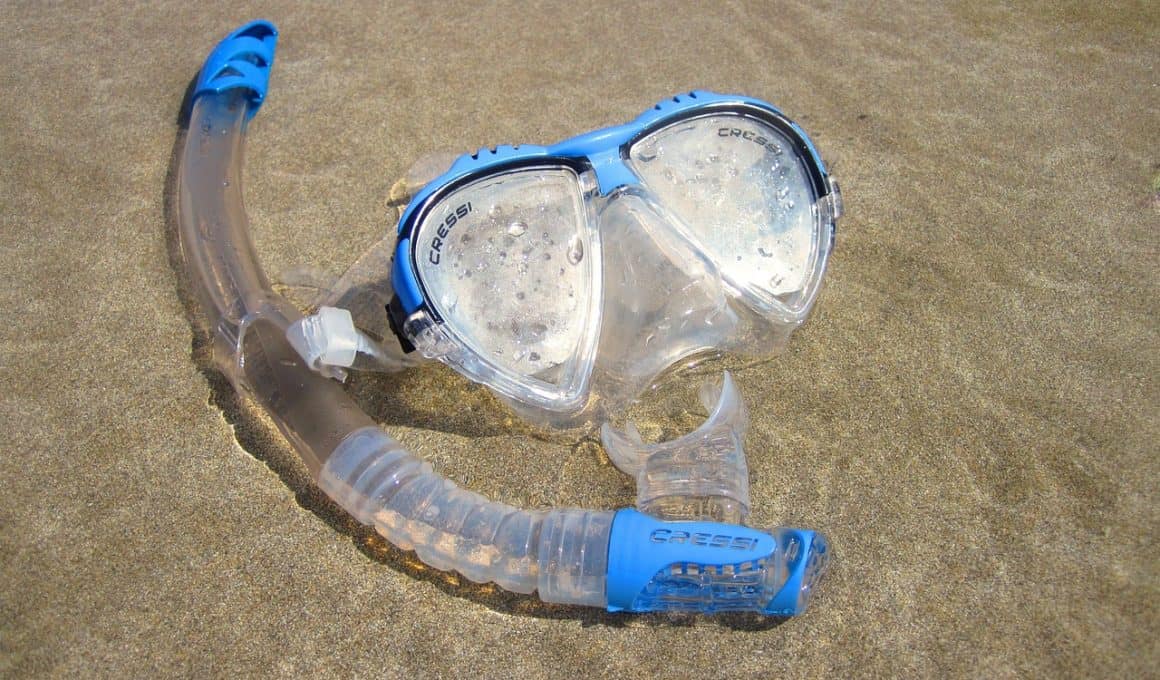Snorkeling offers a rare mixture of ease and depth that invites calm attention from the very first breath. A mask, a snorkel tube and a pair of fins let you float at the surface while the world below slowly reveals itself.
The sea acts like a slow motion theater where colors, motion and sound are scaled down and patterns become easier to follow. Below are five reasons why snorkeling makes a fine mindful ocean activity.
1. Gentle Rhythm Of Breath And Movement
Breathing through a snorkel invites a softer tempo that steadies both body and mind. Each inhale and exhale becomes a small anchor, and the steady air flow cuts through mental static with simple rhythm.
Slow breathing reduces the quick shifts of thought that often lead to worry, so attention can rest on the present. The process is humble and plain, and yet it can change where the mind goes.
The movement that goes with snorkeling matches that breathing in a friendly way. Legs and arms move in easy repetitions that do not demand full focus, so attention can drift toward sensation instead of story.
That kind of bodily repetition is familiar from walking or gentle yoga and is well suited to mood regulation. It is a neat trick, the body doing the work while the mind learns to sit still.
2. Broad Visual Field With Minimal Clutter
When you put a mask on, the visual world brightens and simplifies at the same time. Colors and shapes are clearer, but there are fewer distractions from devices and schedules, so the eyes can settle.
Watching a school of fish cut through sunbeams is like watching a short film where the plot is simply movement and light. Such simple visual narratives make it easy to hold attention without forcing it.
If you want to fully experience this serene underwater clarity, you might consider joining one of the many kona snorkeling tours that guide visitors through Hawaii’s most vivid reefs.
The ocean surface also frames visual input in a naturally limited way, which lowers the need to juggle many items at once. With fewer competing stimuli, the brain can do a deep read of texture, shadow and motion, learning pattern after pattern.
That pattern learning feels good because it gives fast feedback: the mind notices, records and relaxes. It is a gentle loop that rewards staying put.
3. Floating Sensation That Calms The Nervous System

Buoyancy alters how the body feels in an immediate and soothing manner. Supported by water, joints ease off and muscles let go, which sends signals to the nervous system that it can relax.
This physical downshift often brings down heart rate and eases tension in ways that are noticeable even after a short session. It is like giving your system permission to soften.
Because the experience is low impact, it is open to a wide set of people and ages without heavy preparation. That accessibility reduces anticipatory stress, which otherwise would shadow the time spent outdoors.
The gentle motion of waves underfoot adds a small variability that keeps the mind present rather than wandering. It is a quiet, steady companion to mindful attention.
4. Sensory Richness With Low Cognitive Load
The underwater world offers plenty of novelty, from coral shapes to the swim of a curious fish, but it does so without the need for complex problem solving. Sensory richness supplies plenty to notice while the thinking brain can rest from planning and judging.
That balance is ideal for training attention because it rewards noticing and labeling rather than fixing and analyzing. The mind gets practice at being interested without being overwhelmed.
Repeated short exposures to such scenes train one to catch tiny shifts in perception and then let them go. Like watching clouds pass, each sight is brief and then gone, offering a clean slate for the next moment.
Small, regular acts of seeing and releasing build an inner skill for present moment awareness. Over time, those small moments collect into a steadier habit of attention.
5. Social Yet Intimate Time On The Water
Snorkeling works well for solo practice and shared outings, which makes it flexible for different temperaments. Two people can swim side by side in companionable silence, trading looks and quick smiles, or one person can drift alone with plenty of room for inner life.
Shared silence often strengthens bonds because it removes pressure to talk while keeping company nearby. That kind of quiet togetherness can be as nourishing as a conversation.
Groups that move slowly tend to set a tone without saying much at all, creating an unspoken agreement to go gentle and pay attention. Learning to match another swimmer’s pace is an exercise in empathy and regulation that is subtle but potent.
Minimal gear needs and short learning curves get more people out on the water, which in turn makes mindful moments common rather than rare. It is a simple social loop that makes the practice easy to return to.









